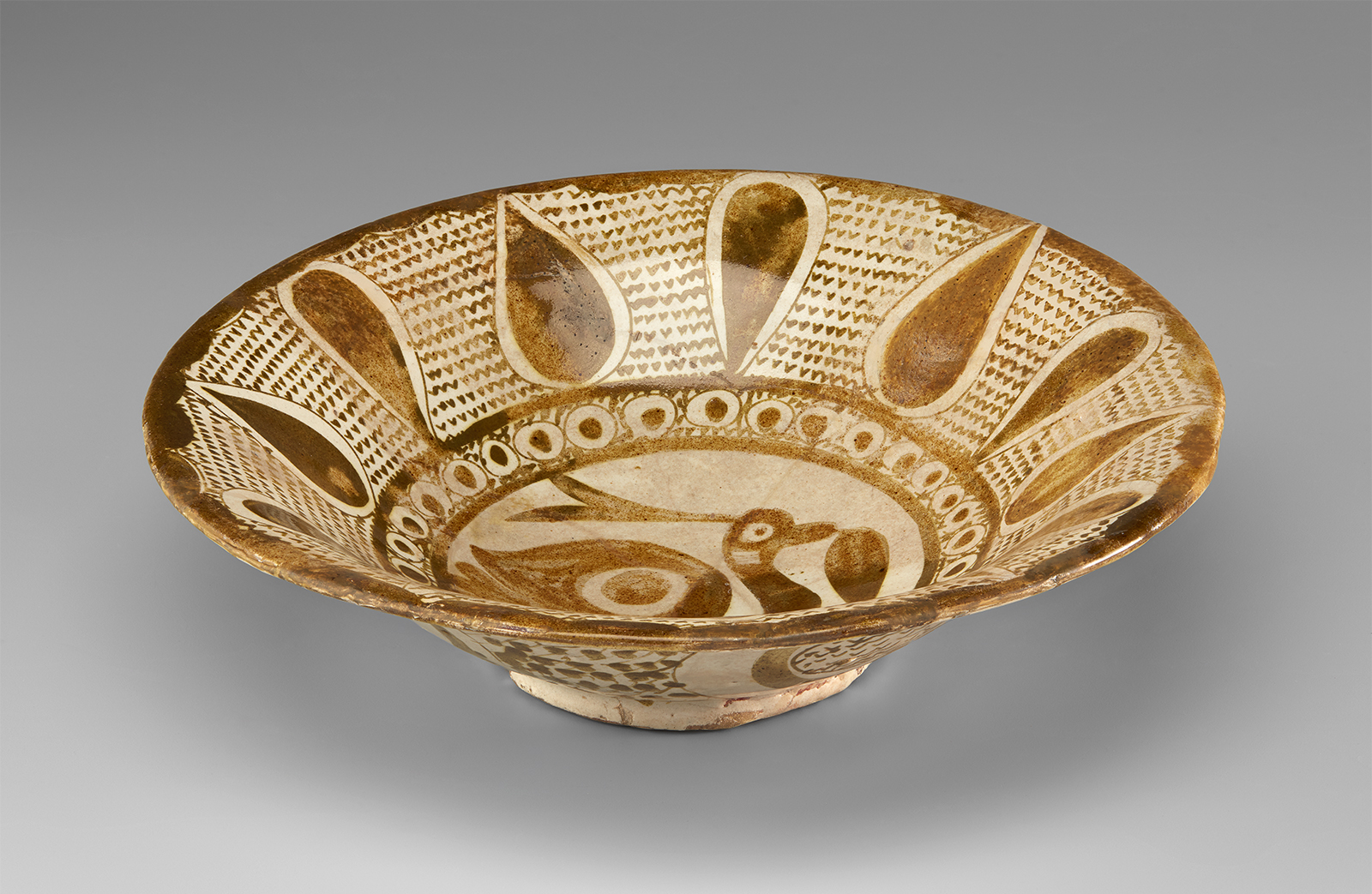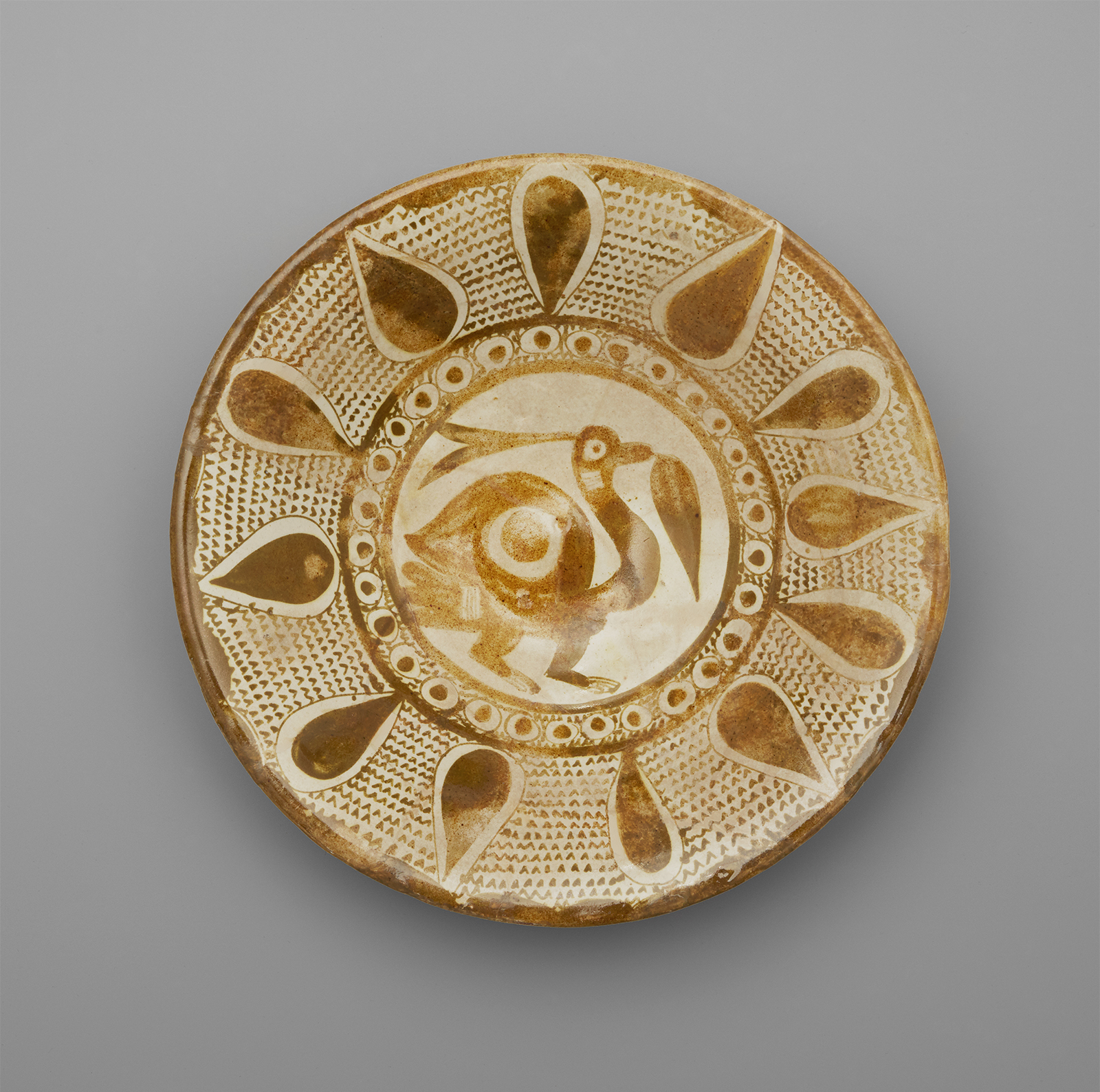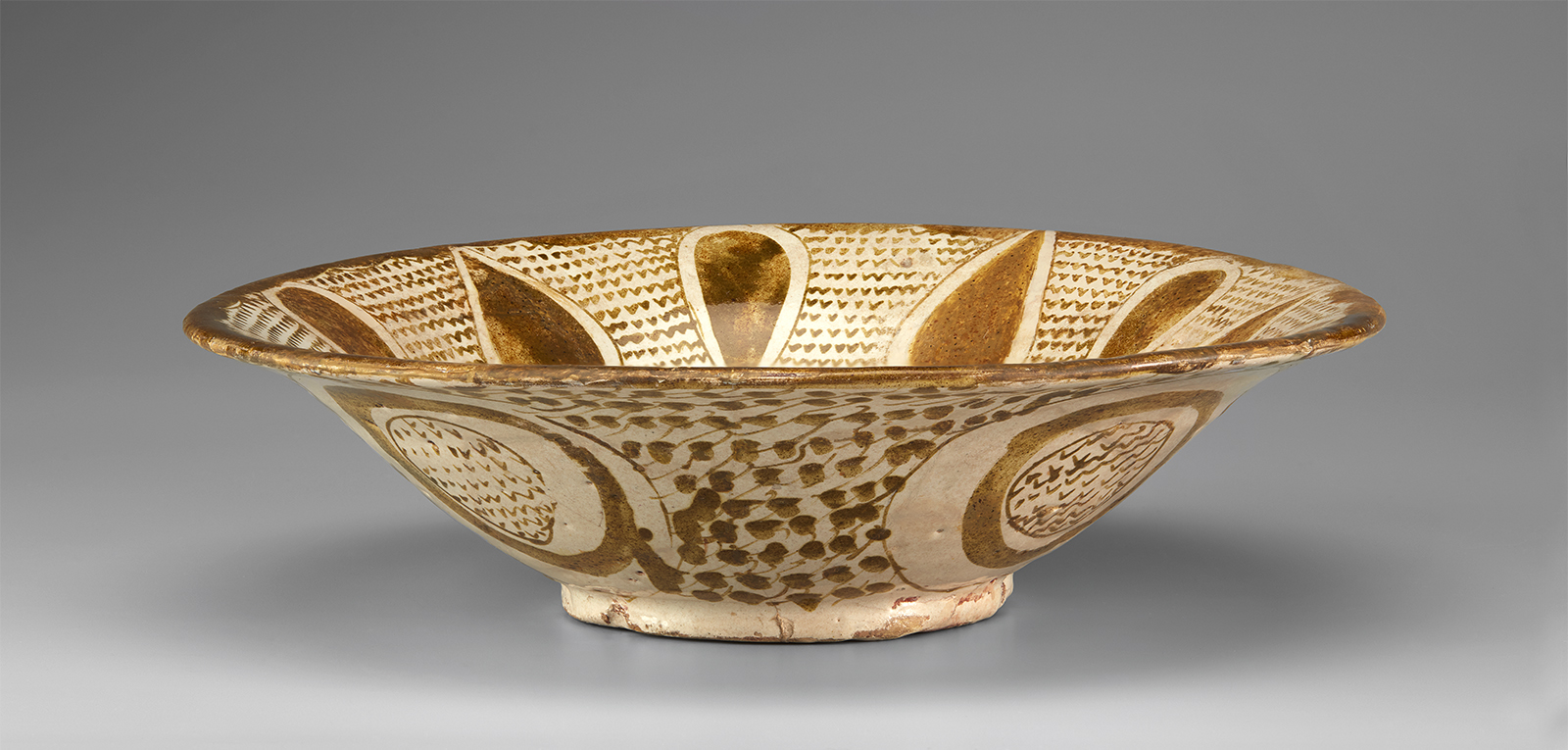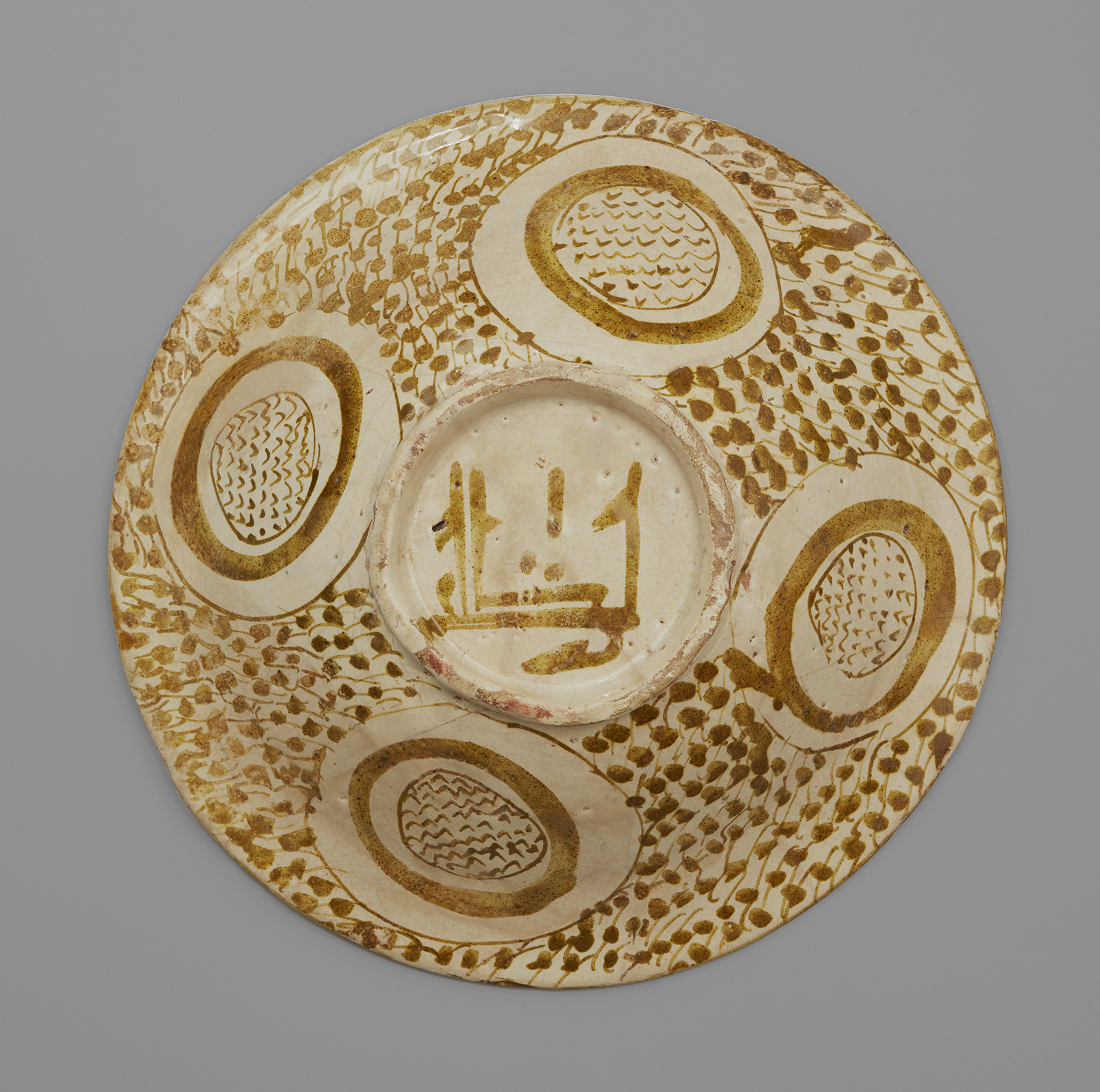Click on the image to zoom
Bowl with a Bird Holding a Leaf in its Beak
- Accession Number:AKM741
- Place:Iraq, Basra
- Dimensions:6 x 23.5 cm
- Date:10th century
- Materials and Technique:earthenware, with lustre-painting on an opaque white glaze (lustre ware)
This bowl was likely produced between about 925 and 975, when the Iraqi production of lustre-glazed ceramics was nearing its end. Clues to this date are the use of earthenware clay, the particular colour of the metallic glaze, and the decoration of a centralized, large-scale motif—in this case, a bird with a leaf in its beak. Many bowls with similar decoration are attributed to Basra, once a major port city in southern Iraq, and their origin there has been confirmed by petrographic analysis. On the base of the bowl is the Arabic word barakah, meaning “blessing,” bestowing good fortune upon its owner. On the sides are four roundels, filled with v-shaped marks, set against a ground of irregular dots.
— Marika Sardar
Note: This online resource is reviewed and updated on an ongoing basis. We are committed to improving this information and will revise and update knowledge about this object as it becomes available.








